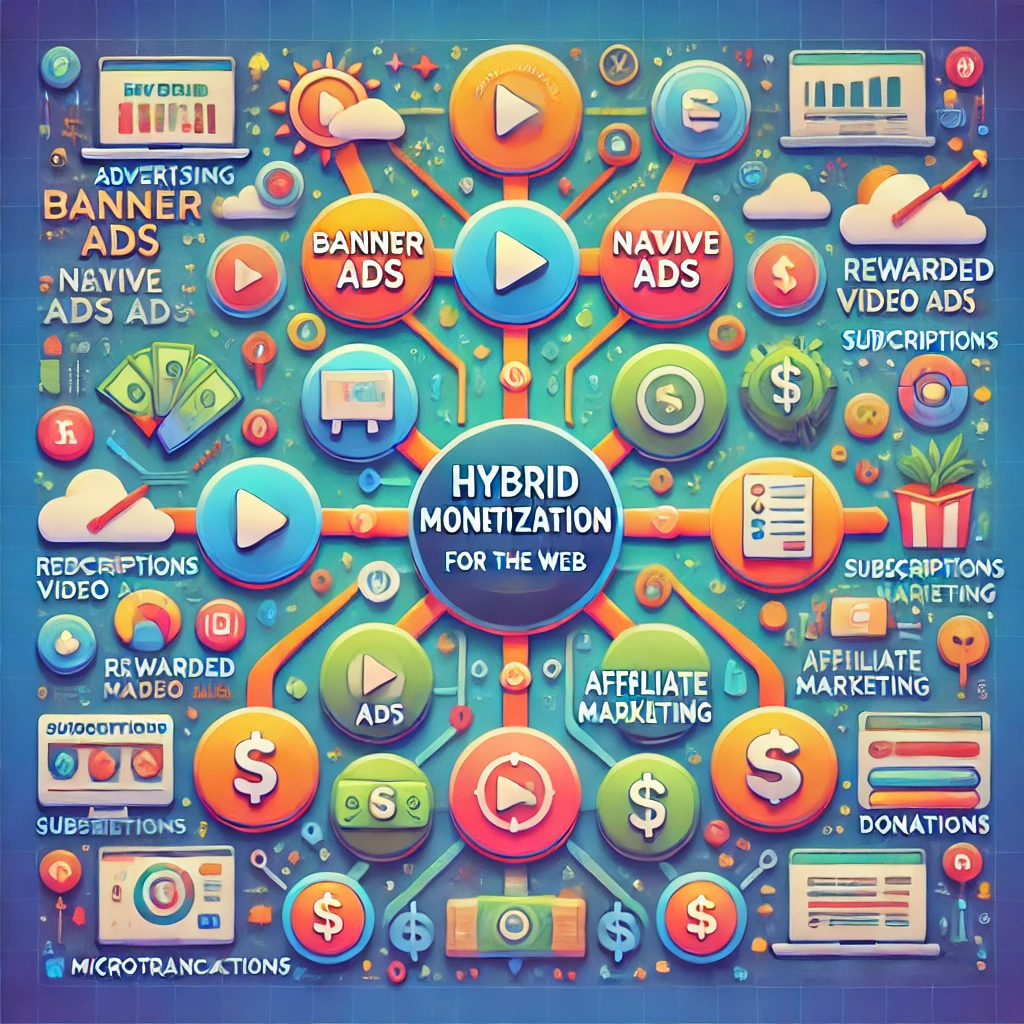2017: Video Ad Monetization and Games – A Year of Transformation
In 2017, online video ad spending grew by 31%, with most of this growth driven by mobile. Desktop video ad spending also saw double-digit increases, showing that video content was flourishing across platforms. For game developers, this spending boom represented an opportunity to implement rewarded and pre-roll video ads to maximize revenue.
As advertisers increased budgets and sought innovative ways to engage users, game developers adapted their strategies. Here, we explore the main trends that shaped video ad monetization in 2017 and continue to influence today’s gaming landscape.
Key Trends Shaping Video Ad Monetization in 2017
1. Ad Budgets Shift to Social Networks and Social Games
In 2017, social networks emerged as primary hubs for digital activity, where users spent hours daily. Platforms like Facebook, Snapchat, and Instagram offered news, entertainment, and games in one place. Recognizing this, advertisers allocated more budget to social networks, knowing they were crucial for reaching engaged users.
For game developers, social networks offered a massive, engaged audience base. Social games—games within or connected to social media—flourished, benefiting from larger user bases and advanced targeting tools.
- Wider Reach: Social networks helped developers reach more users through organic shares and viral engagement.
- Advanced Targeting: Social platforms allowed developers to reach users based on interests, behavior, and demographics.
- Seamless Ad Experience: In-game ads blended naturally into social media, enhancing engagement without disrupting gameplay.
As a result, more game developers incorporated ad models designed specifically for social platforms, boosting both engagement and revenue.
2. Engaging Brand Ads with Emotional Connections
Advertisers realized that capturing user attention required more than traditional messaging. In response, they created ads that fostered emotional connections with viewers. These ads focused on storytelling, making them more memorable and effective.
For game developers, this trend meant an opportunity to work with brands on richer ad experiences. By incorporating interactive ads, developers could deliver memorable ad experiences that connected with players emotionally.
- Enhanced User Experience: Ads that felt like part of the game improved the player’s experience.
- Increased Ad Engagement: Players responded more positively to ads that connected with them emotionally.
- Improved Brand Recall: Emotional ads created lasting impressions, benefiting both the advertiser and the developer.
These shifts allowed developers to boost ad performance, with engaging ads that enhanced rather than interrupted gameplay.
3. The Rise of Rewarded Video Ads
Rewarded video ads became a popular format in 2017, offering users incentives for watching ads. Unlike traditional ads, rewarded ads gave users a choice: watch the ad and receive in-game rewards like virtual currency or extra lives. This choice-based approach aligned with user preferences, making rewarded ads a top choice for brands.
The demand for rewarded video ads increased as brands recognized their effectiveness. Key benefits included:
- Full Ad Viewership: Rewarded ads guaranteed that users watched the entire ad to earn their reward.
- High Engagement Rates: Users were more likely to engage with ads that offered meaningful rewards.
- Natural Gameplay Integration: Rewarded ads fit seamlessly into gameplay, often appearing after levels or before upgrades.
Game developers expanded rewarded ad entry points to maximize engagement. By placing rewarded ad options at strategic points, like after level completions, they improved ad interaction rates and revenue.
4. Exploring New Platforms: AR, VR, and AI in Gaming
2017 also saw advancements in augmented reality (AR) and virtual reality (VR) that redefined gaming experiences. Games like Pokémon Go showed users’ readiness for immersive environments. With tools like Google Cardboard and Daydream, more users could access AR and VR gaming experiences.
Developers responded to AR and VR’s potential by exploring ad formats that blended with immersive gameplay. AR and VR ads allowed for highly interactive, three-dimensional ad experiences within the game.
- Immersive AR and VR Ads: Players could interact with branded content in a realistic, three-dimensional space.
- AI-Powered Ad Customization: AI-driven ads allowed for more targeted and relevant ad experiences based on user behavior.
- Enhanced Engagement: The novelty of AR and VR created deeper engagement, making ads more memorable.
Although AR and VR ads were still in early development, they hinted at the potential for highly interactive and engaging ads in future games.
The Impact of 2017 on Game Monetization Today
The trends established in 2017 created a solid foundation for the monetization strategies developers use today. Rewarded video ads have only become more popular, thanks to their ability to offer value without intruding on the user experience. Social networks remain essential for ad spending, and AR, VR, and AI continue to shape interactive ad opportunities.
For developers, these 2017 trends underscore the importance of adaptive monetization strategies that respect user engagement and leverage technological advancements. By building on the insights from 2017, developers today can create monetization models that enhance user satisfaction and drive sustainable growth.
AppLixir’s Role in Supporting Game Developers
As video ad monetization rose, platforms like AppLixir helped developers optimize ad revenue on Facebook, iOS, and Android. AppLixir made it easy for developers to integrate rewarded video ads without disrupting gameplay.
AppLixir’s offerings helped developers:
- Maximize Revenue with Rewarded Ads: Integrate rewarded ads seamlessly to complement gameplay.
- Gain Insights with Analytics: Track ad performance to improve placements and user engagement.
- Support Cross-Platform Reach: Reach audiences across devices, increasing revenue opportunities.
AppLixir enabled developers to capitalize on these trends, helping them navigate and benefit from the expanding video ad market.
Conclusion: 2017’s Legacy in Video Ad Monetization
The innovations and shifts that began in 2017 still shape video ad strategies in the gaming industry today. Social platforms and rewarded video ads remain powerful tools for monetizing games while preserving user experience. Meanwhile, technologies like AR, VR, and AI are central to creating the next wave of interactive, immersive ad experiences.
Game developers who adapted to 2017’s trends saw significant revenue growth and user engagement. By continuing to evolve alongside these changes, today’s developers can create ad strategies that build on 2017’s foundations and drive long-term success.




